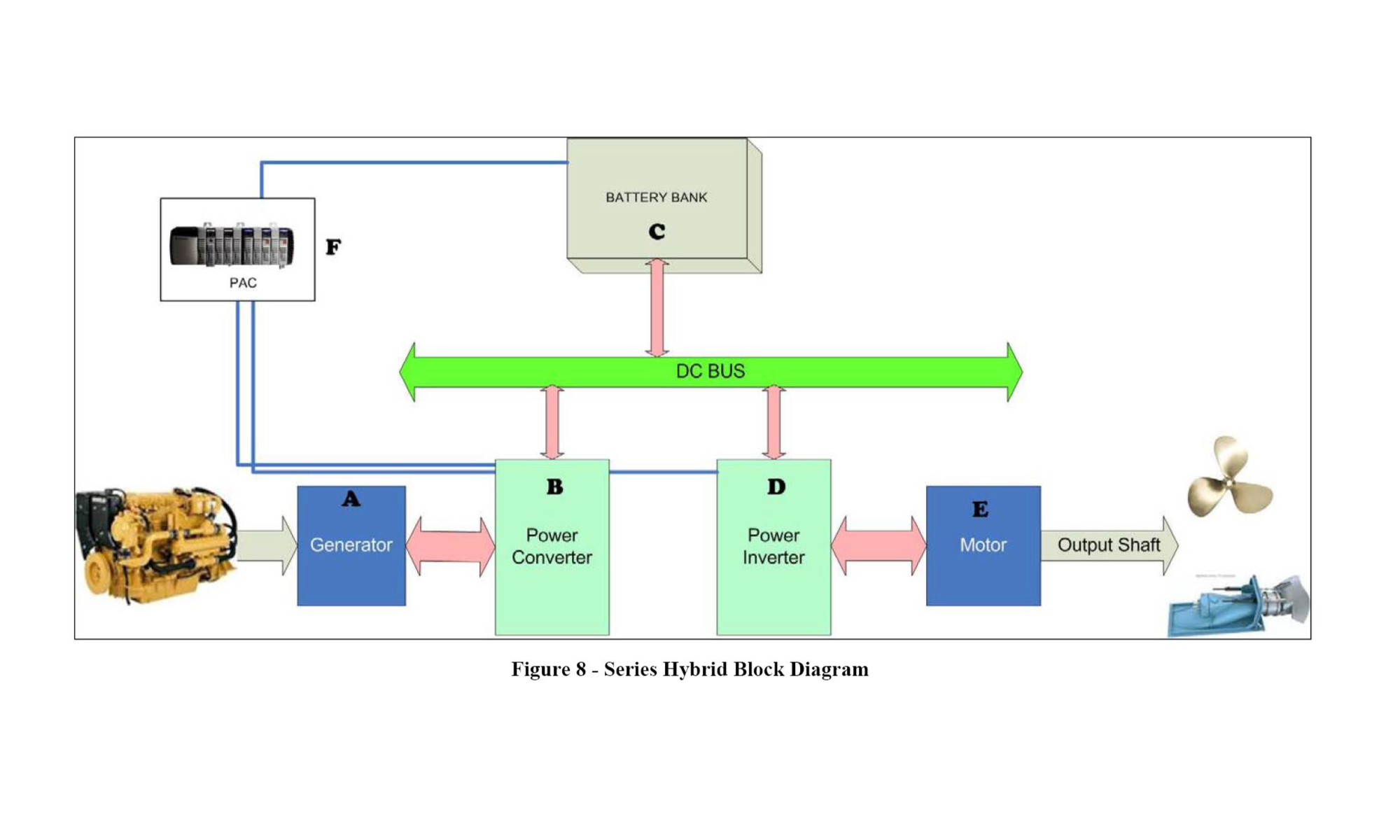DLBA UNIVERSITY
Discussion of a Hybrid Diesel-Electric Propulsion System for Unmanned Surface Vessels to Improve Fuel Economy and Mission Effectiveness without Loss of Peak Performance
JANUARY 20, 2019
By:
Mr. Jeffrey Bowles, (Technical Director, Donald L. Blount and Associates, Inc.)
Mr. Chris M Jones, (Sr. Application Engineer, Rockwell Automation)
Dr. Jennifer G. Michaeli, (Assistant Professor, Old Dominion University and Consulting Naval Architect, Oregon Iron Works, Inc.)
This paper considers the initial feasibility of an unmanned surface vessel (USV) using a Series Hybrid Diesel Electric propulsion system. The study considers the integration of a novel, diesel electric hybrid propulsion and control system to be used on board small manned or unmanned marine vessels to improve fuel economy and mission effectiveness without loss of peak performance. The system features variable-speed, direct current (DC) generators, lithium ion batteries, and variable-speed, alternate current (AC) drives connected to high efficiency permanent magnet motors.

The overall power management and mission management system proposed provides the operational flexibility to make decisions regarding the best use of the generator’s fuel curves or even shut engines off to provide better fuel economy and achieve more time on station. A potential concept of operation is included in the study to highlight areas where this system can be beneficial over current USV design approaches, and to identify areas where further technology advances are necessary in order to realize the full potential of this type of system.
In case you would like to receive the full paper, or discuss about this subject, please contact Jeffrey Bowles.
References
- Abbot, J., ‘The History of Modular Payload Ships: 1975-2005’, Presentation at the US Naval Postgraduate School, April 2006.
- Andrews, D., ‘The Management of Warship Design’, RINA Transactions Vol. 135, 1993.
- Guilfoyle, J., et al, ‘Patrol Craft Requirements and Technology for the Next Century’, SNAME /ASNE Ship Design Symposium, Arlington, Virginia, 1992.
- Hornhaver, CDR H., ‘STANDARD FLEX Distributed Architecture Combat System’, Naval Engineer’ s Journal, 1995.
- Lavis, D.R., et al, ‘The Promise of Advanced Naval Vessels for NATO’, SNAME Marine Technology, Vol. 27, No. 2, 1990.
- The Boeing Company, ‘Development of the Model 928-83 Multimission Hydrofoil Combatant Point Design’, Doc No. D312- 80975-1 Rev A, December 1985.
- Webpage, Flyvefisken-class patrol vessel, http://en.wikipedia.org/wiki/Flyvefisken_class_ patrol_vessel.
- Webpage, StanFlex, http://en.wikipedia.org/wiki/StanFlex
- Hootman, J. C., and Whitcomb, C. A., “A Military Effectiveness Analysis and Decision Making Framework for Naval Ship Design and Acquisition”, Naval Engineers Journal, 2005.
Share this article online:
HOW CAN WE HELP YOU?
FEEL FREE TO CONTACT US

DLBA Naval Architects
860 Greenbrier Circle, Suite 201 Chesapeake, Virginia 23320 USA
Phone: 757-545-3700 | Fax: 757-545-8227 | dlba@gibbscox.com
STAY UPDATED
SIGN UP FOR OUR NEWSLETTER
Keep your finger on the pulse of the latest points of focus in naval architecture and engineering: subscribe to DLBA’s concise monthly newsletter. Within it, we briefly describe and picture our latest projects and concepts. We encourage feedback and seek to have our newsletter spark conversation regarding potential collaborations and further advancements as we share our passion for the industry.
